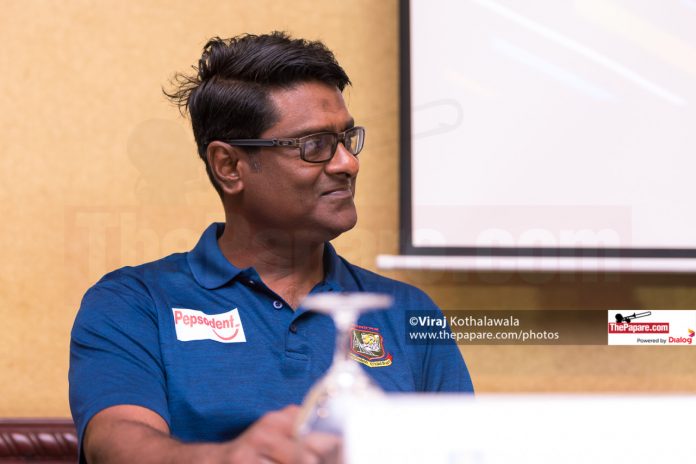Opportunities were few for Navid Nawaz at his prime as most key positions of the Sri Lankan team were occupied by some of the stalwarts of our cricket. When the late Guy De Alwis handed him his Test debut, he was two months away from his 29th birthday. But it is as a coach that Nawaz made a reputation. He worked for Sri Lanka Cricket as the Under-19 coach from 2009 to 2014 and some of the current Test players like Niroshan Dickwella, Kusal Mendis and Dhananjaya de Silva – came through him. He migrated to Australia in 2015 and was hired by Bangladesh Cricket Board two years ago to guide their Under-19 cricketers. He was in the news earlier this week after helping Bangladesh win the ICC Under-19 World Cup in Potchefstroom, South Africa.
The Island caught up with the 46-year-old from D.S. Senanayake College, who has experience dealing with both Sri Lanka’s Under-19 structure and that of Bangladesh. He has the knowledge and authority to talk on what works for Bangladesh and what doesn’t work for us and came up with some impressive insights which should catch the attention of authorities.
“Everyone is asking me why although Sri Lanka has got the best school cricket structure in the world we aren’t producing good players and making an impact in the Youth World Cups. I feel that other countries have worked hard to build their grassroots. SLC meanwhile relies heavily on school cricket to pick players not knowing whether the quality that we have is good enough.”
“Sri Lanka Cricket has no control over school cricket. In that way, other countries have overtaken us and gone past us and that’s definitely an area that we need to address,” explained Nawaz.
“There are a few other things that we need to sort. For example, players in Bangladesh know what is ahead of them and there is a career path for them. They have three tournaments in the season. If they are good enough to go onto play domestic cricket, they can make a career out of cricket. They don’t have to play for Bangladesh. In First Class cricket there is decent money involved. They have financial security once they start playing domestic cricket.”
“In Sri Lanka, we have poor payments in domestic cricket. The interest among the players is not so great unfortunately. If you take for example the Australian summer, we lose about more than 100 cricketers in that period. They go and play a very low level of cricket – grade cricket. Mostly, they will be playing on synthetic. They will be playing with and against those who play over the weekend just for fun. And if you ask why are they doing it, you will find out that there’s more money in it,” Nawaz explained.
“Don’t tell me the story that you have to have a passion for the game. At the end of the day, you need to have a living. If cricket is the path you have chosen, then it should look after your living. You cannot be a burden to your parents when you are beyond 20. You have got to stand up on your feet.
“When we won the World Cup in 1996, it inspired so many people. We had about 400 schools playing cricket up to that point and in the next few months the number of schools playing cricket doubled. The World Cup win looked after our cricket until 2010 maybe. Now we have to rethink. All countries have made steps to look after their First Class cricketers. It’s high time that we do so too. We need to restructure our domestic cricket.”
There’s been massive celebrations in Dhaka as the team was welcomed home on Wednesday. Nawaz is enjoying the moment. He gave us a brief account on how cricket development works in Bangladesh.
“We don’t have school cricket in Bangladesh. The cricket programme is run by the board and we have teams from under-15 level. We have skill camps and coaches from overseas come over to do sessions. Our preparation for the Under-19 World Cup starts from the age of 17.”
Nawaz explained his strategy against India in the final. “India beat Pakistan in the semis and Australia in the quarters. If you saw, India were far more aggressive in both games. They are aggressive with their body language and even with bat and ball there’s quite a bit of aggression. We knew that if we didn’t match India’s aggression in the final, it would be tough for us. So we tried to match India’s aggression or if not to be more aggressive.”
“Not the stuff like overstepping the line. We have to keep in mind that we have got to play the game in the right spirit. But to be aggressive whether it be with facial expression or with what you do. For example, we didn’t try to contain India. We wanted to bowl them out. We knew if we let them bat 50 overs that would be the end of the story. It was a very strong Indian side. Three of their players had been sold at the IPL auction for US$ 300,000 each. So we had to play really well to beat them.”
“The squad that won the title in South Africa, when we started we had 65 players. Then we handpicked 30 players and worked on their skills. Then we got down a trainer from England to raise fitness standards. We just had the Asia Cup and tour of Sri Lanka in 2018. By the time 2019 came, we cut down the pool to 25 and picked only from those 25. We had tours to England, New Zealand and Sri Lanka. We also hosted a few teams. The preparation was pretty good.”
















